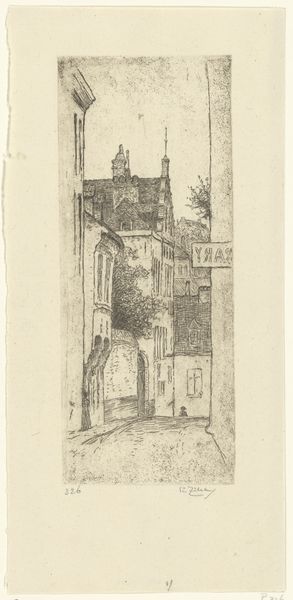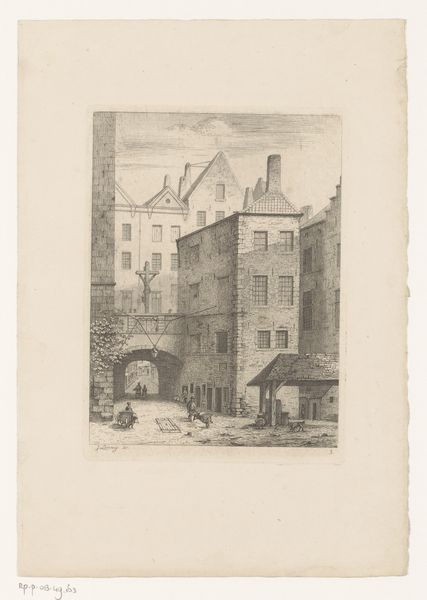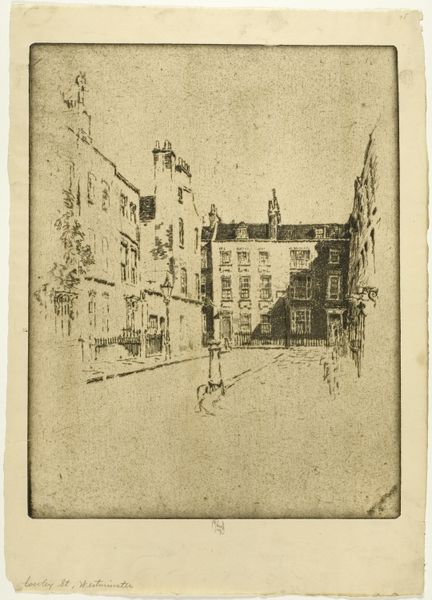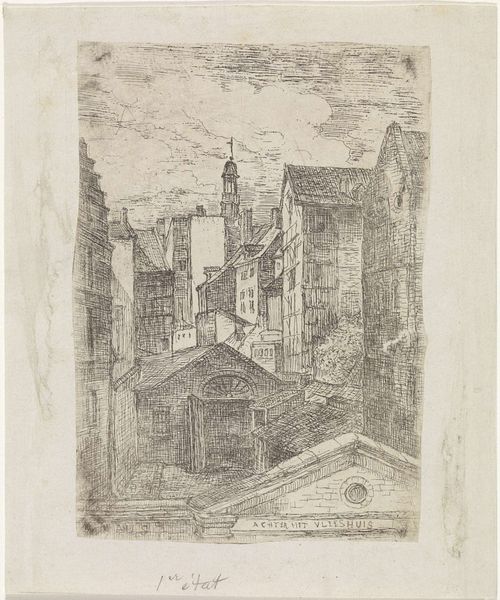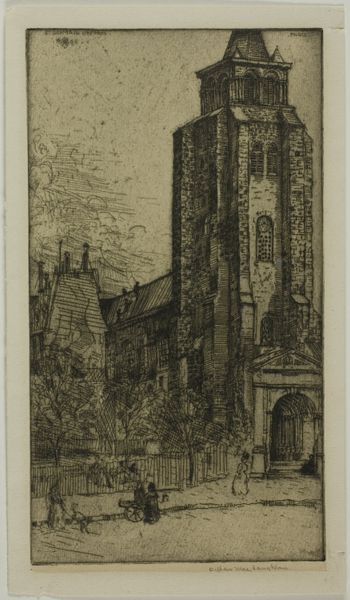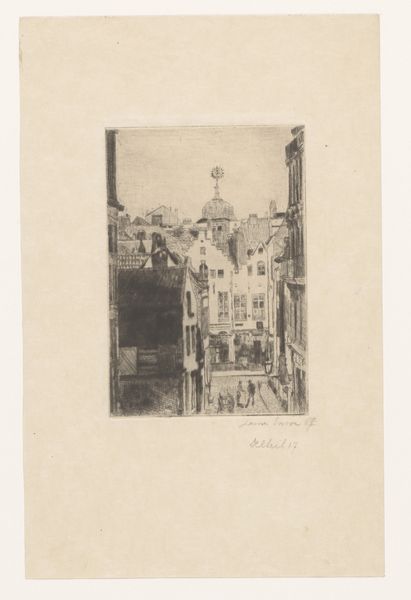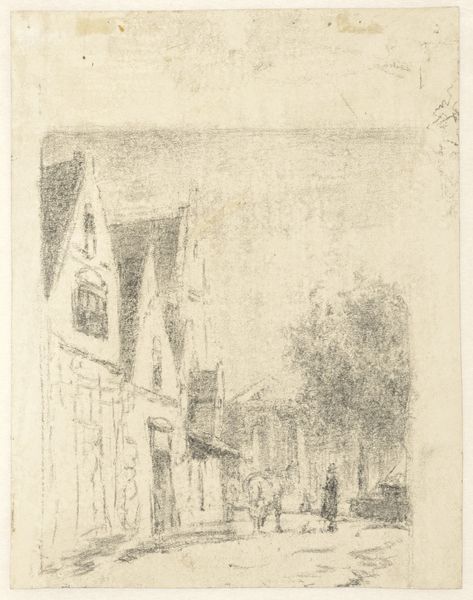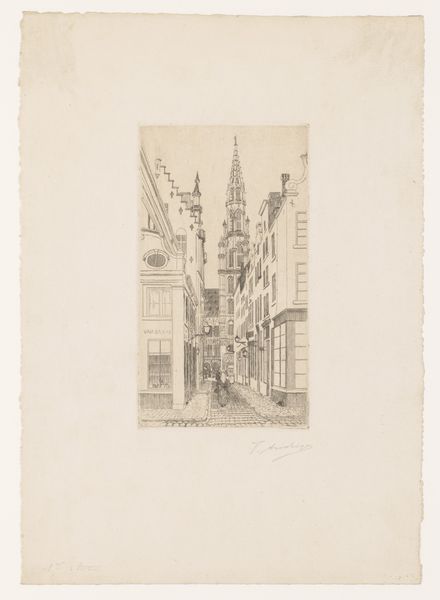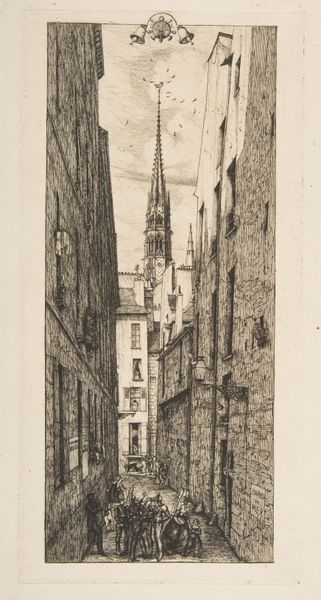
Dimensions: 247 × 130 mm (image); 247 × 130 mm (plate); 247 × 130 mm (primary support); 321 × 213 mm (secondary support)
Copyright: Public Domain
Editor: This is Charles Meryon's etching, "Church of St. Etienne du Mont, Paris" from 1852, currently residing at The Art Institute of Chicago. The detail achieved through the etching technique is incredible; you can almost feel the roughness of the stone. What do you see when you look at this piece? Curator: For me, the brilliance here lies in Meryon’s articulation of the material reality of 19th-century Paris. Consider the process: the copper plate meticulously worked, bitten by acid, printed onto paper. This isn't just a picture; it's a record of industrial processes meeting artistic labor. And look at the depiction itself: the grime on the stonework, the evidence of age and use on every surface. It challenges the Romantic idealization of the city, doesn’t it? Editor: It does. I guess I was focused on the Romantic style. But you're right, there is that raw, unglamorous quality that you wouldn't expect. The way he renders the surfaces really brings out the "stuffness" of the buildings, if that makes sense. Curator: Exactly. Consider the paper itself - its texture, its potential origin, perhaps even its eventual journey through the market. These are all crucial elements that constitute the totality of the artwork. How does the print medium democratize the image? What economic realities did this type of reproducible art operate under? Editor: That's fascinating! I never thought about it that way. Thinking about it as a commodity, produced and consumed. Curator: It shifts our perception. Instead of a singular, precious object, we're engaging with something that speaks to broader systems of production and distribution within Paris, right? Editor: Absolutely. I’ll definitely look at prints differently now, understanding them not just as images, but as products of a specific time and place. Curator: And considering the labor involved! Thank you for offering your perspective. I, too, learned from considering the work's emotive qualities initially apparent from the composition and style.
Comments
No comments
Be the first to comment and join the conversation on the ultimate creative platform.
